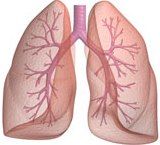- Clinical Technology
- Adult Immunization
- Hepatology
- Pediatric Immunization
- Screening
- Psychiatry
- Allergy
- Women's Health
- Cardiology
- Pediatrics
- Dermatology
- Endocrinology
- Pain Management
- Gastroenterology
- Infectious Disease
- Obesity Medicine
- Rheumatology
- Nephrology
- Neurology
- Pulmonology
COPD: 5 Things Every Primary Care Physician Needs to Know

1. A diagnosis of COPD requires confirmation with pre- and post-bronchodilator spirometry testing.
A. Based on an appropriate history you may be able to diagnose COPD using pre-bronchodilator spirometry alone-but you may then miss signs of adult-onset asthma. Post-bronchodilator testing is not that hard!
B. The magic numbers are values for the FEV1 and the FVC; the FEV1/FVC should be ≤0.70.
2. New COPD guidelines are available.
A. There are 2 new sets of guidelines:
- One jointly commissioned by the American College of Physicians (ACP), American Thoracic Society (ATS), American College of Chest Physicians, and European Respiratory Society (2011)1
- Another from the Global Initiative for Chronic Obstructive Lung Disease (GOLD) (2011)2B. The ACP/ATS update stresses the importance of prescribing a long-acting bronchodilator for every patient who has COPD and an FEV1 of ≤60% of predicted.
C. The GOLD guidelines suggest that COPD treatment be selected based on a combination of spirometry results, symptom burden (using a measure such as the MRC breathlessness scale3 or COPD Assessment Test,4 and exacerbation rate.
3. Inhaled corticosteroids (ICS) are used to decrease the risk of the next exacerbation.
A. ICS (or ICS/LABA combinations) are not to be used for all COPD patients and the new GOLD guidelines suggest the step to start ICS should be based on history of exacerbation and not just an FEV1 of 50% of predicted. Up to 30% of patients with severe COPD (FEV1 from 30% to 49% of predicted) will not have an exacerbation over 1 to 3 years and should not be exposed to unnecessary use of ICSs.
4.The hierarchy of therapy for COPD begins with shorting-acting bronchodilators, moves to long-acting bronchodilators and then to combinations of long-acting bronchodilators (eg, LABA plus a long-acting anti-muscarinic).
A. Following the patient’s second exacerbation in any year, consider adding an ICS or phosphodiesterase (PDE)-4 inhibitor to their maintenance therapy. PDE-4 inhibitors are used in patients who have exacerbations and significant sputum production-the chronic bronchitis element of COPD.
B. Low-dose theophylline can be a good adjunct for those with severe or very severe COPD.
5. COPD exacerbations are managed with oral or systemic corticosteroids. It may take 6 to 8 weeks for a return to baseline symptom level, functional status, and lung function.
A. Exacerbations are clearly significant adverse events for patients with COPD.
B. All patients should be seen for follow-up within 3 to 7 days after hospitalization for an exacerbation or within 2 weeks after treatment as an outpatient.
C. Readmission is best avoided through careful follow-up, appropriate therapy after hospital discharge, and a refresher course on appropriate medication use.
And, one for the road-Patient inhaler technique should be checked regularly-at any visit that occurs longer than 2 weeks after a previous visit. Poor inhaler technique is common and leads to poor COPD control. Make sure you know how to use the inhalers.5
References:
References
1. Qaseem A, Wilt TJ, Weinberger SE, et al. Diagnosis and management of stable chronic obstructive pulmonary disease: a clinical practice guideline update from the American College of Physicians, American College of Chest Physicians, American Thoracic Society, and European Respiratory Society. Ann Intern Med. 2011;155:179-191.
2. Global Initiative for Chronic Obstructive Lung Disease. Global Strategy for the Diagnosis, Management and Prevention of Chronic Obstructive Pulmonary Disease, Revised, 2011. Available at: http://www.goldcopd.org/uploads/users/files/GOLD_Report_2011_Jan21.pdf. Accessed on January 25, 2012.
3. Stenton C. The MRC breathlessness scale. Occup Med (Lond). 2008;58:226-227. Available at: http://occmed.oxfordjournals.org/content/58/3/226.full. Accessed January 20, 2012.
4. COPD Assessment Test. Available at: http://www.catestonline.org. ©2009 GlaxoSmithKline. All rights reserved.
5. Self TH, Wallace JL, George CM, et al. Inhalation therapy: Help patients avoid these mistakes. J Fam Pract. 2011;60.
